The Floyd Dilemma: Which Floyd Rose model is right for you?
Posted by Jon Stafford on May 17th 2024
When it comes to locking tremolo (vibrato) bridges, the Floyd Rose is the undisputed GOAT. We won’t even address the truth of that statement beyond asserting that in 2024 it is simply an axiomatic fact. But there is more on this topic to consider.
The Original Floyd Rose (manufactured by Schaller in Germany) or the OEM-exclusive Floyd Rose 1000 Series are fairly close in design and performance. Some folks say they are pretty much identical, and some even profess a preference for the Korean-made 1000/1500 bridges. Quite a few will say the difference in cost outweighs any advantage offered by the more expensive version. I get asked about this a lot, and I see a lot of people laboring over the question of whether a German OFR is better, or worth the upgrade vs. a 1000 series bridge. If you ask 100 guitarists that question you will get likely 100 different answers, because the question of worth, or 'value' is completely subjective.
The point of this blog post is not to add one more guitarist’s opinion on this debate (though I definitely have a preference). I’m going to offer some objective data that I have observed, and leave the conclusions for another day.
For this evaluation, I disassembled a black German OFR and a chrome FRT-1000 to take a variety of measurements and photos. I removed the block entirely from the equation, as that is a commonly replaced item, regardless of which trem is used. Might there be some qualitative differences due to the plating for each? Could be, so leave room for that in your consideration of the data. I used what I had available.
Weight (No block, hardware or arm socket, plate and fine tuners only):
OFR 124g
1000 132g
Saddle set with string lock blocks
OFR 104g
1000 96g
Hardware set (screws, shim, fine tuner tension spring)
OFR 48g
1000 46g
Arm Socket
OFR 10g
1000 8g
Baseplate thickness
OFR .134”
1000 .139”
Depth (forward edge to rear, not counting whale tail)
OFR 1.469”
1000 1.482”
Width (bass to treble)
OFR 3.604”
1000 3.614”
And now some pictures to see the differences in construction details. I had a hard time getting a good focus on the 1000 chrome to show the knife edge geometry, which is quite different than the edges on the German bridge.

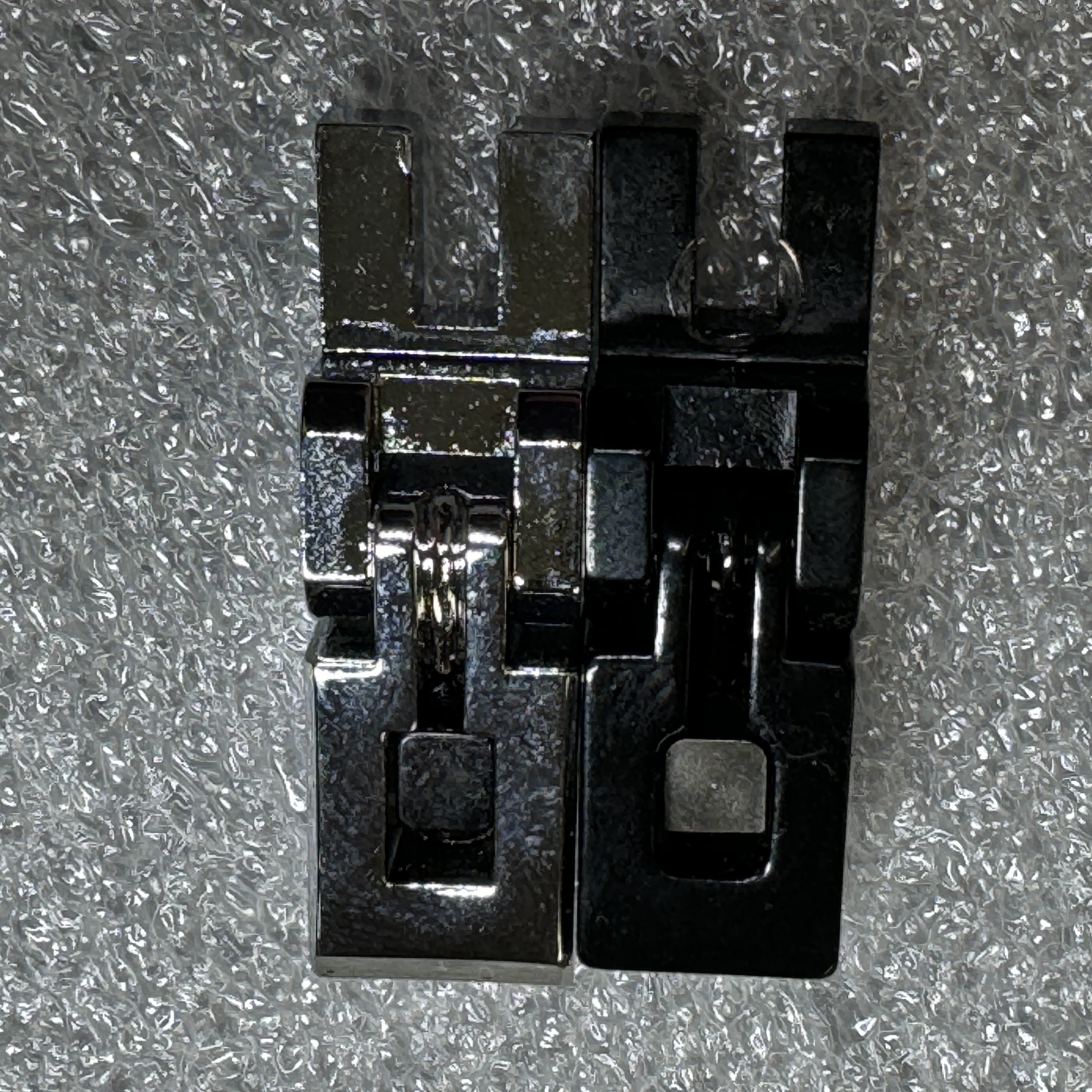
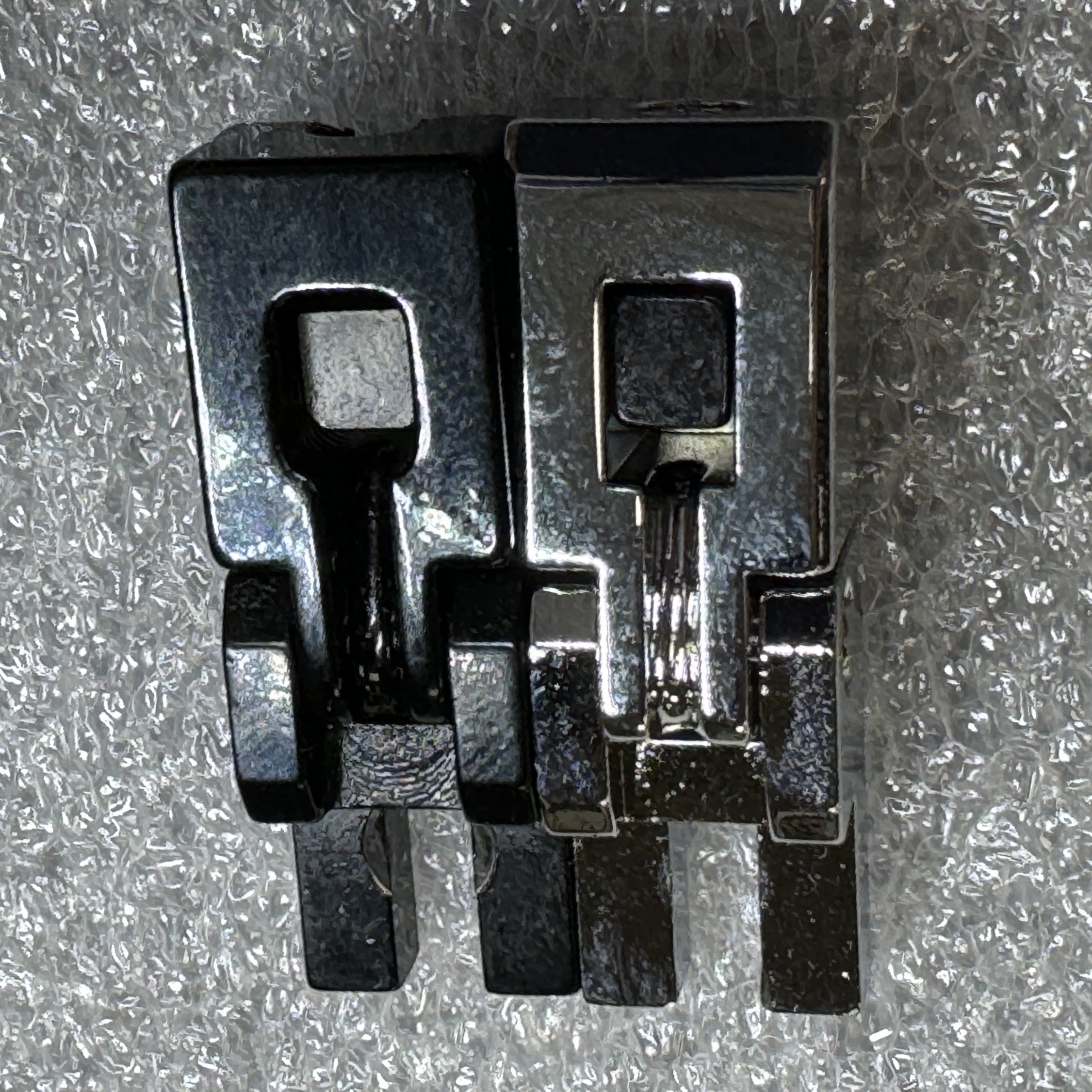

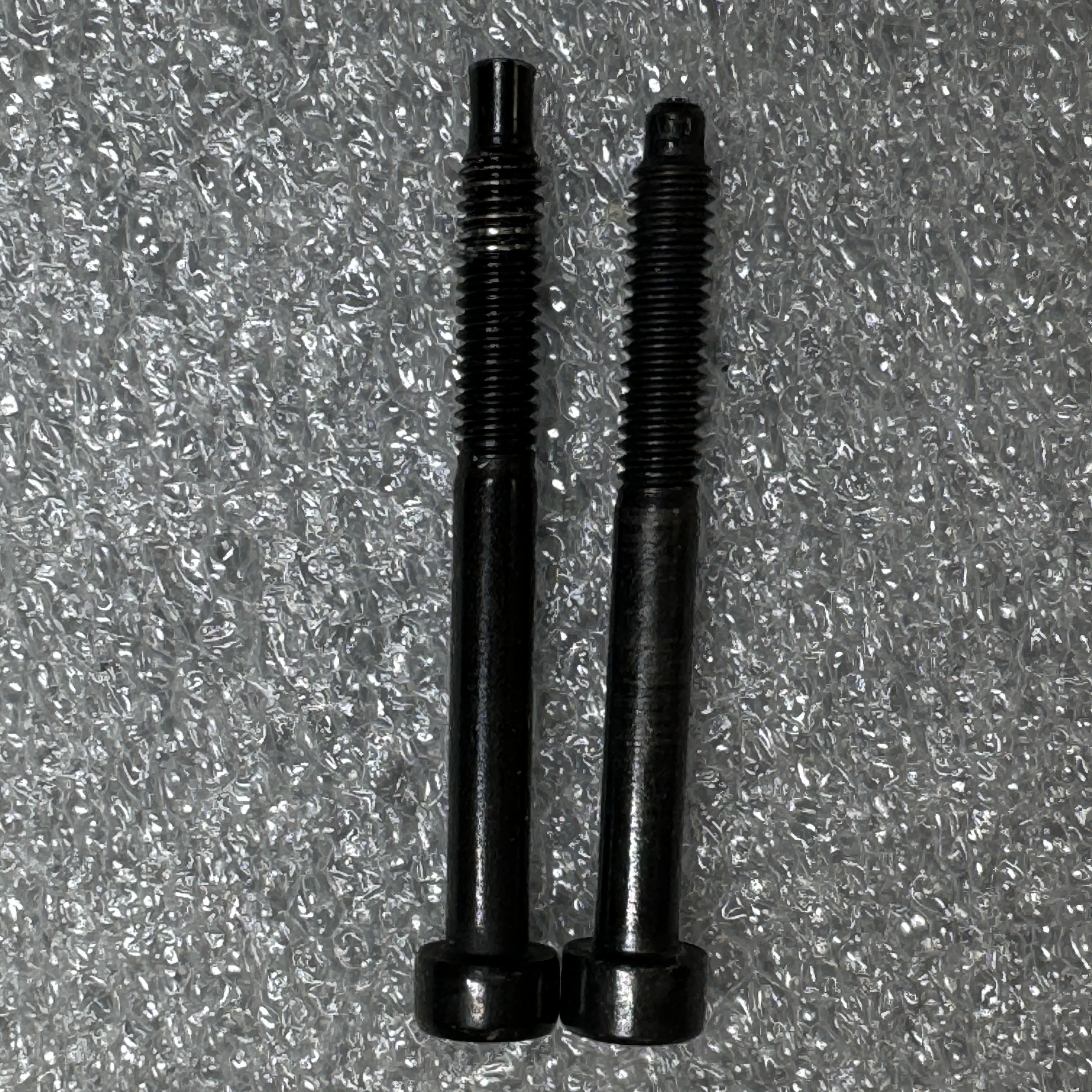
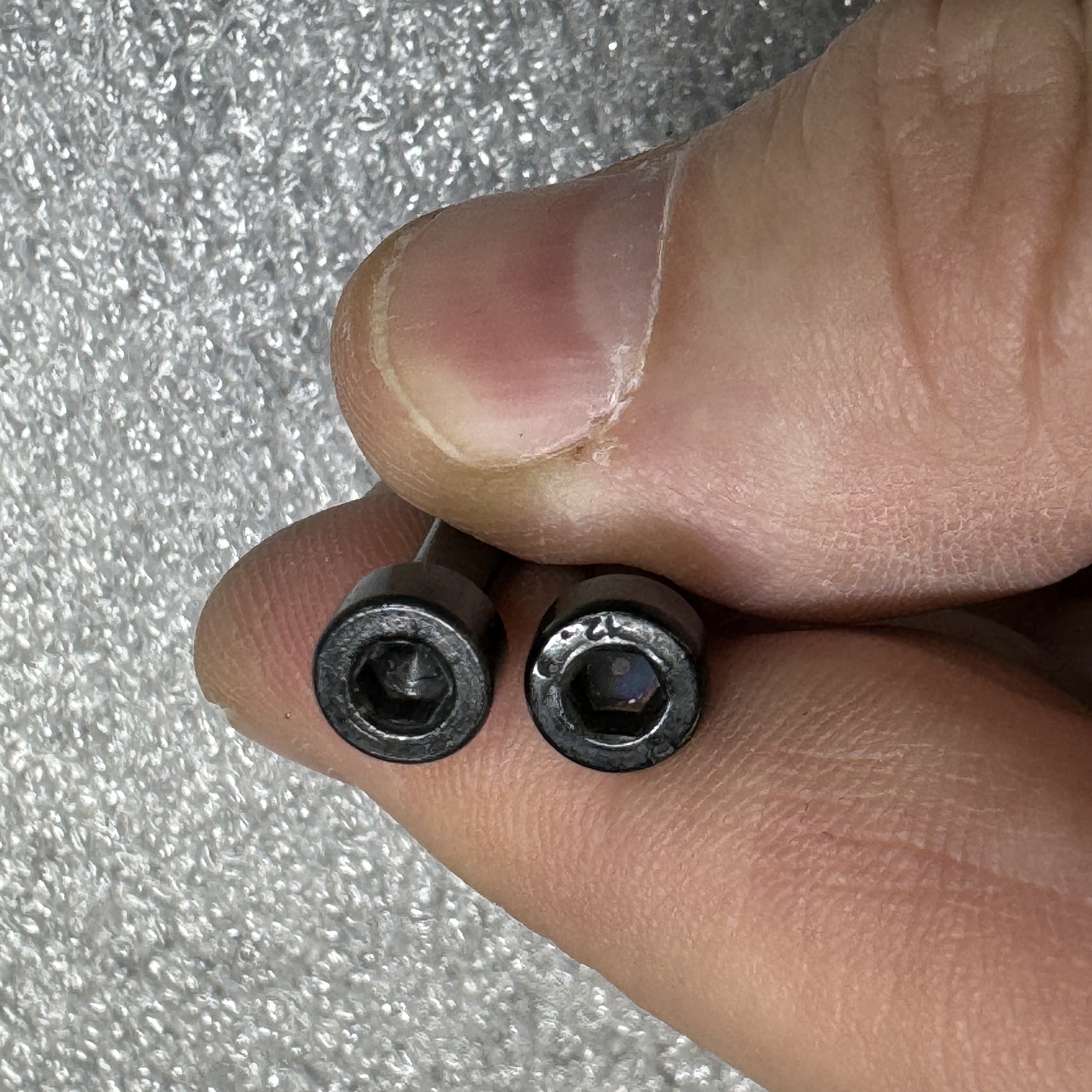

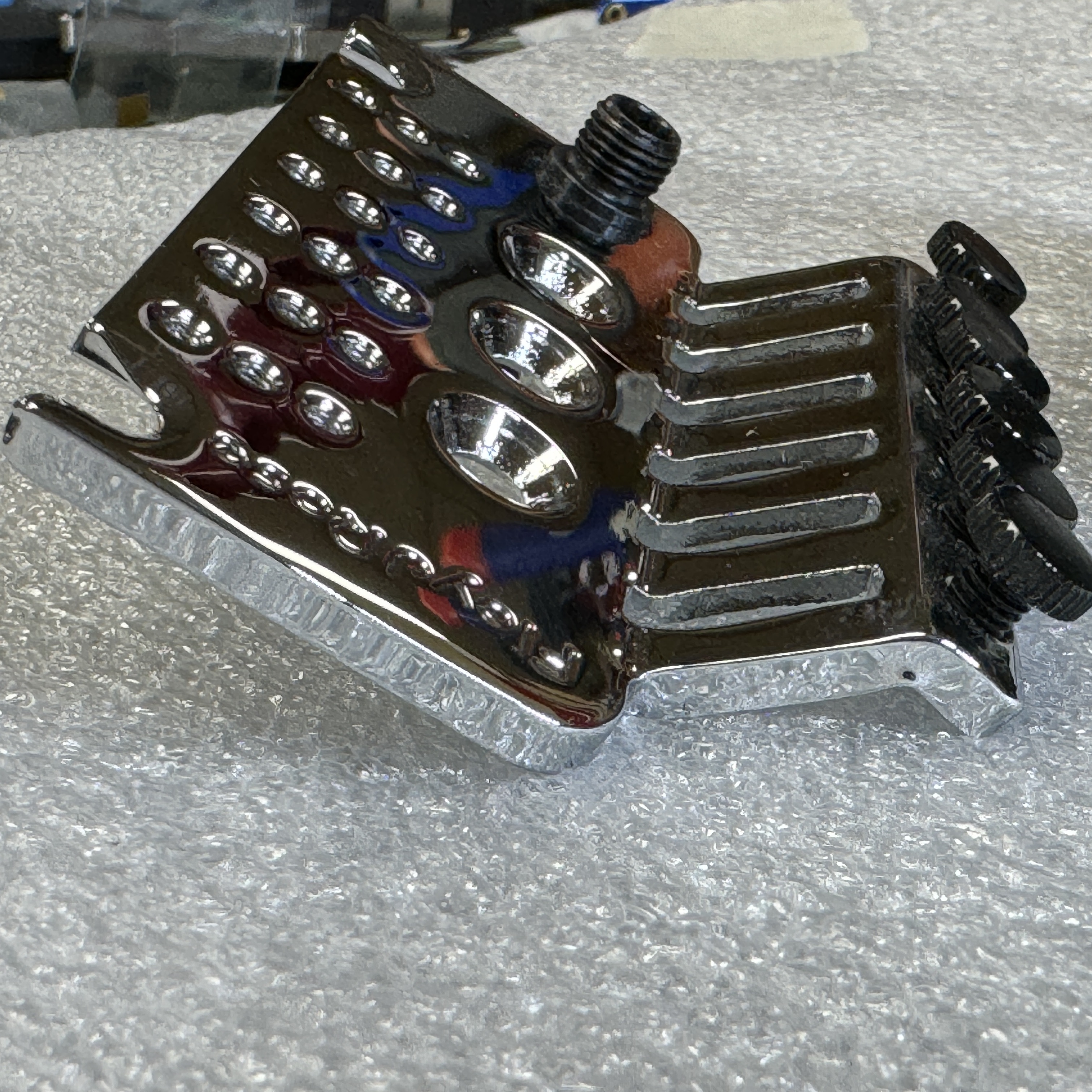
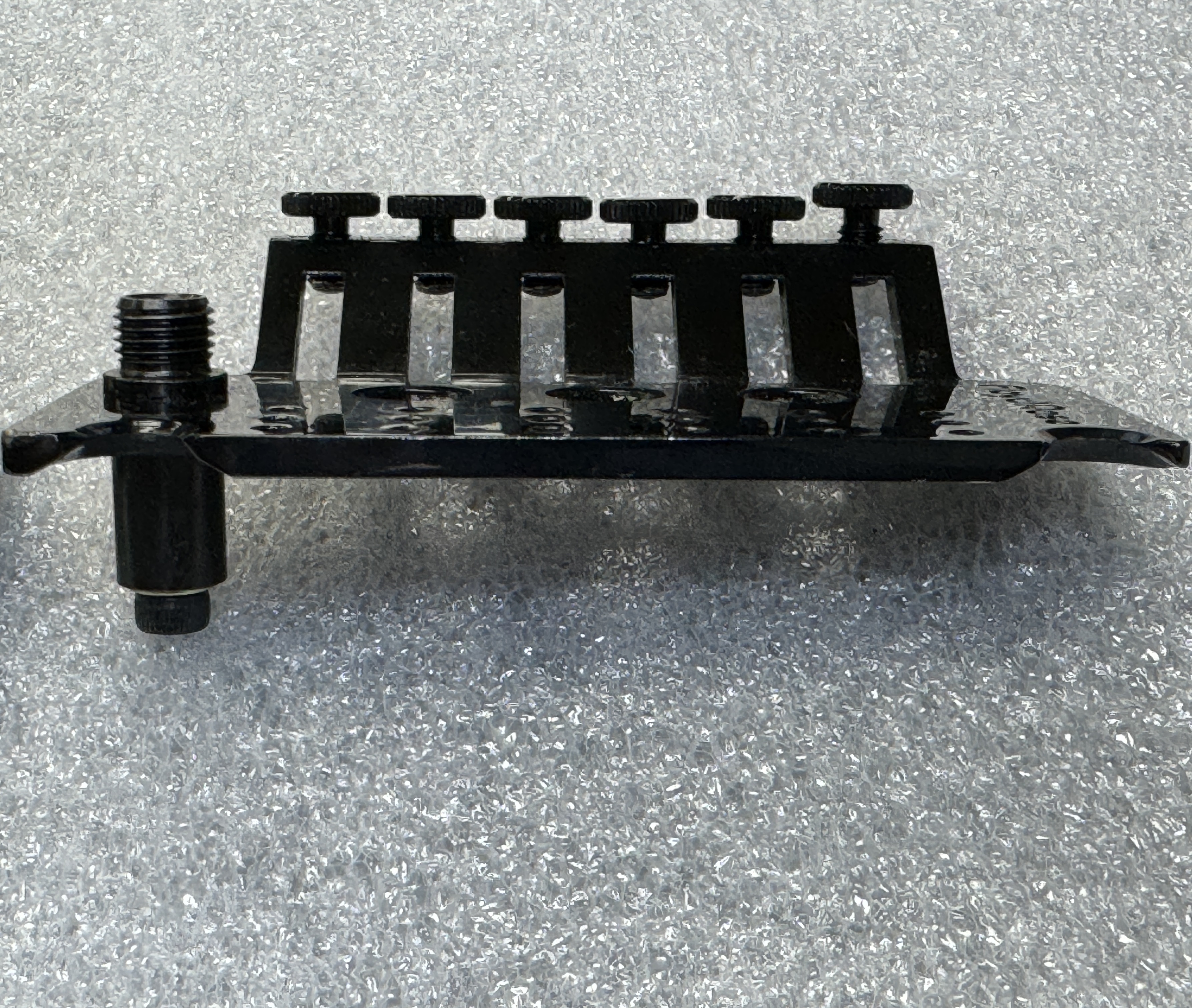
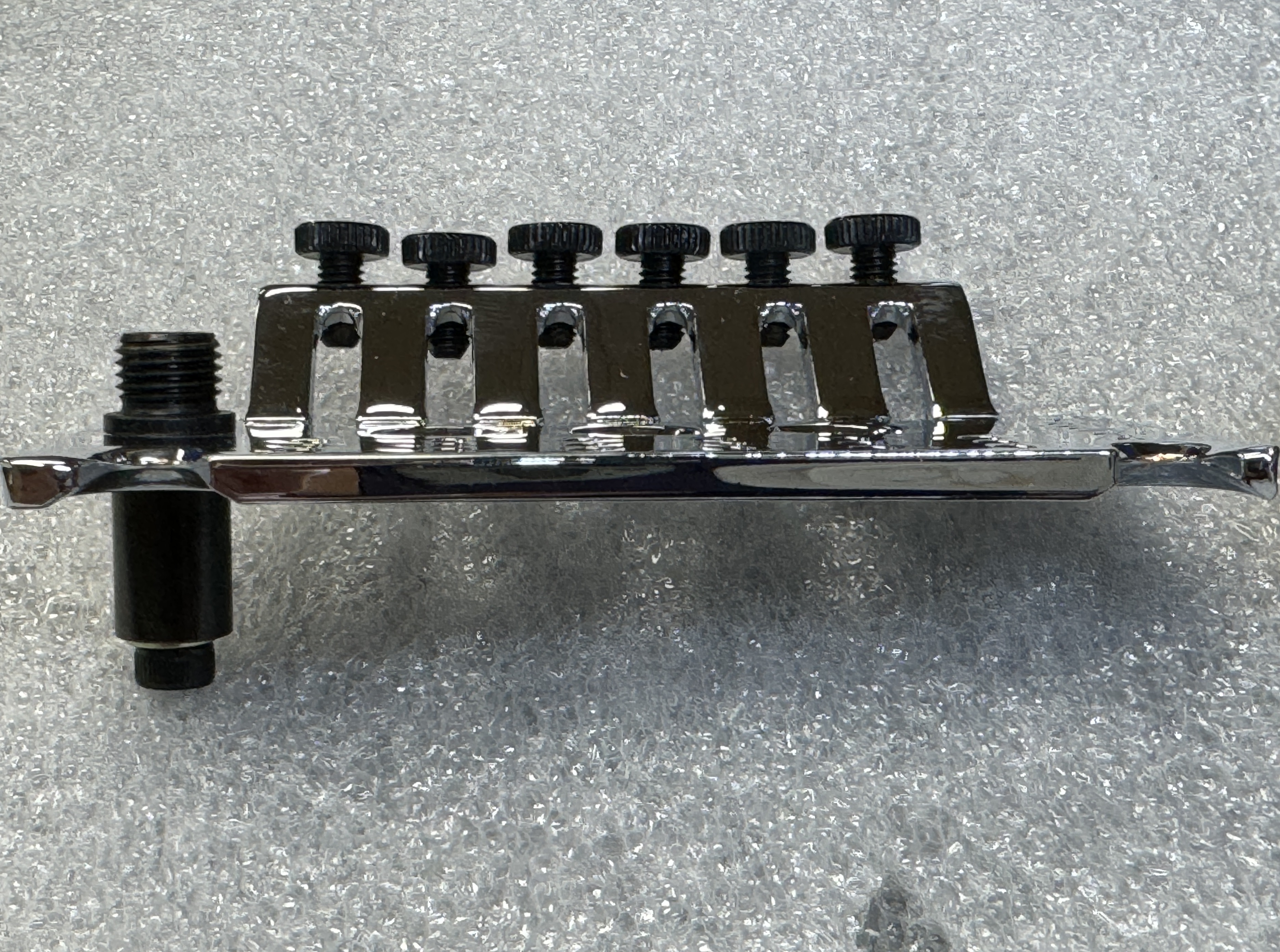
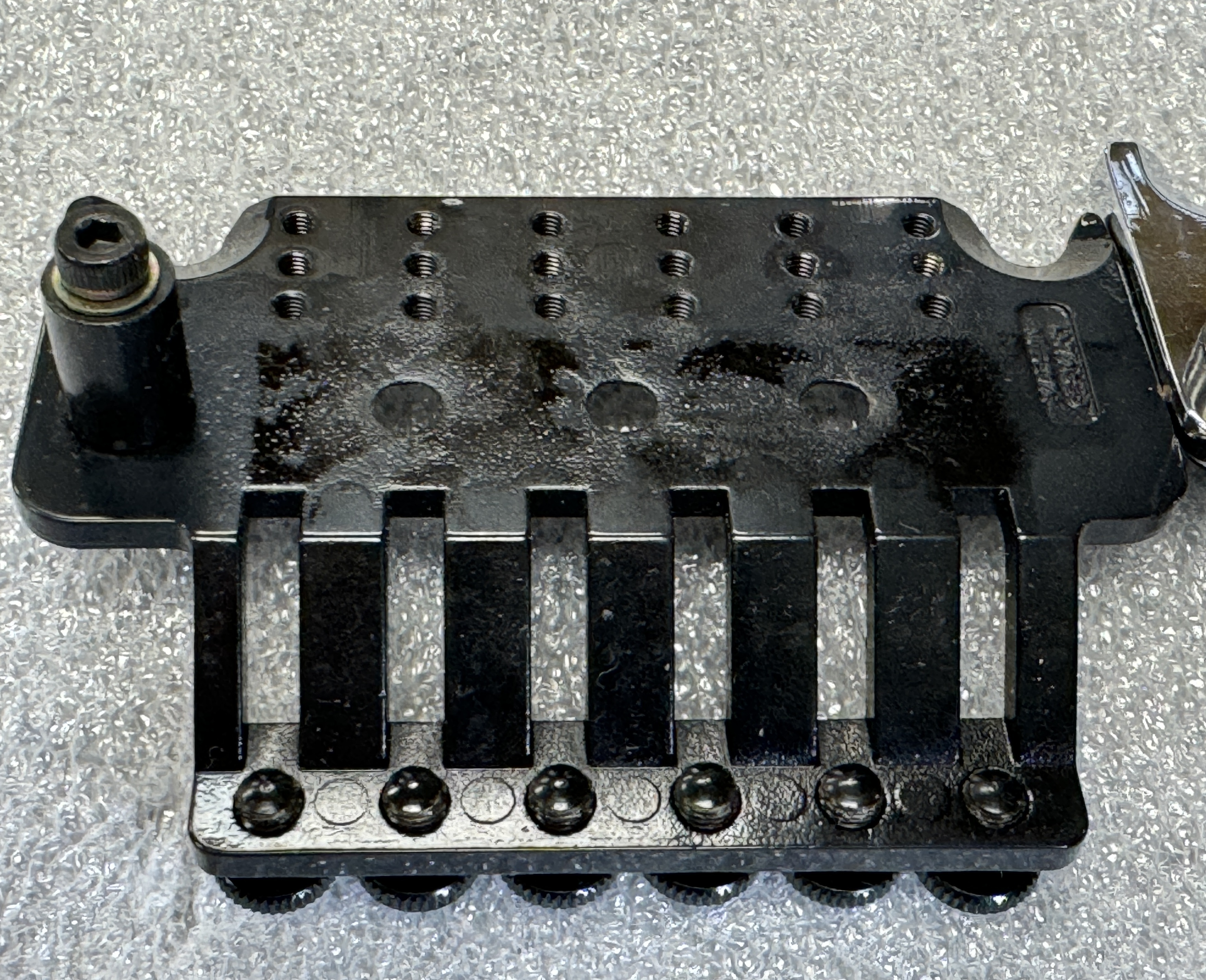

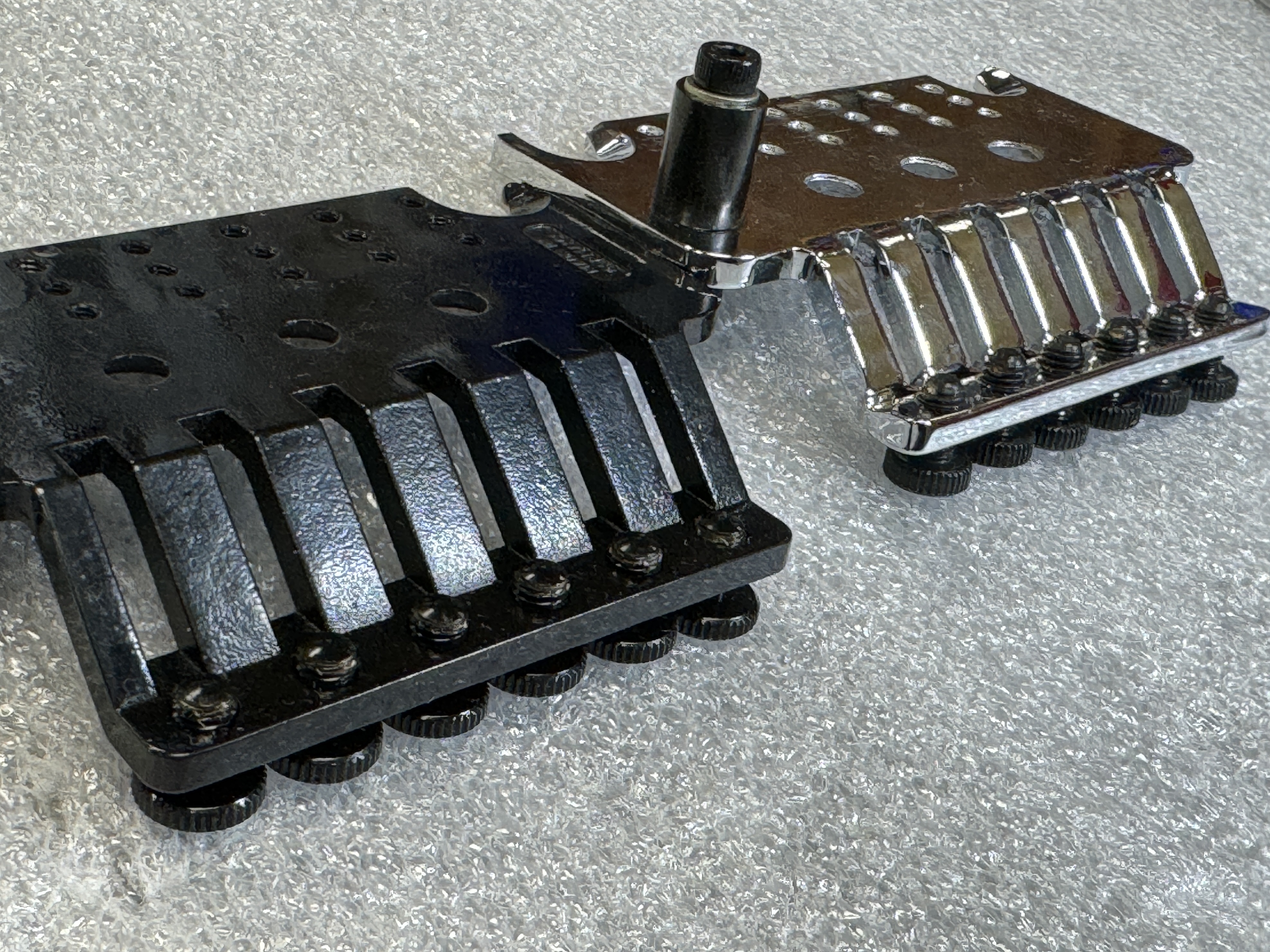
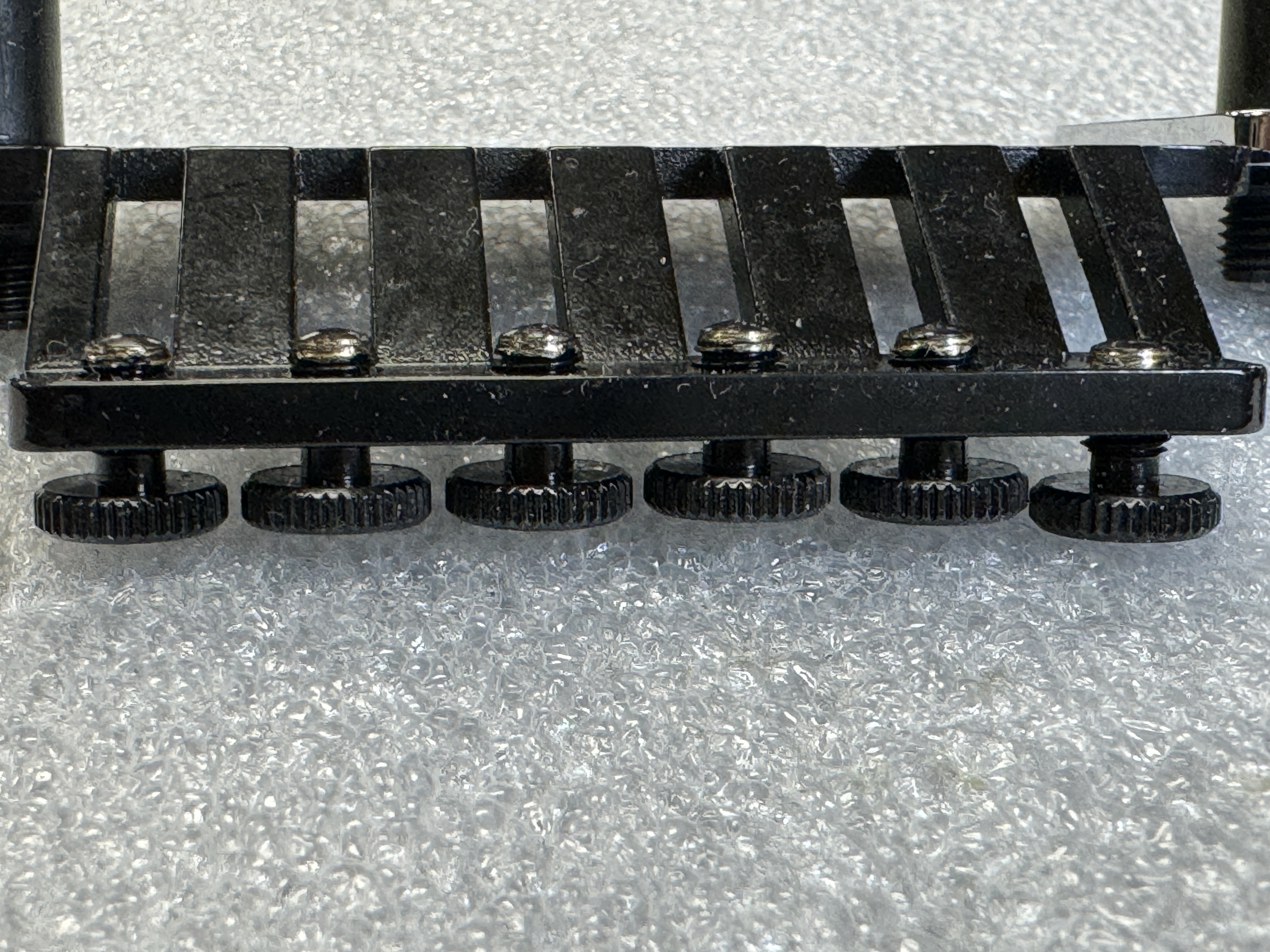
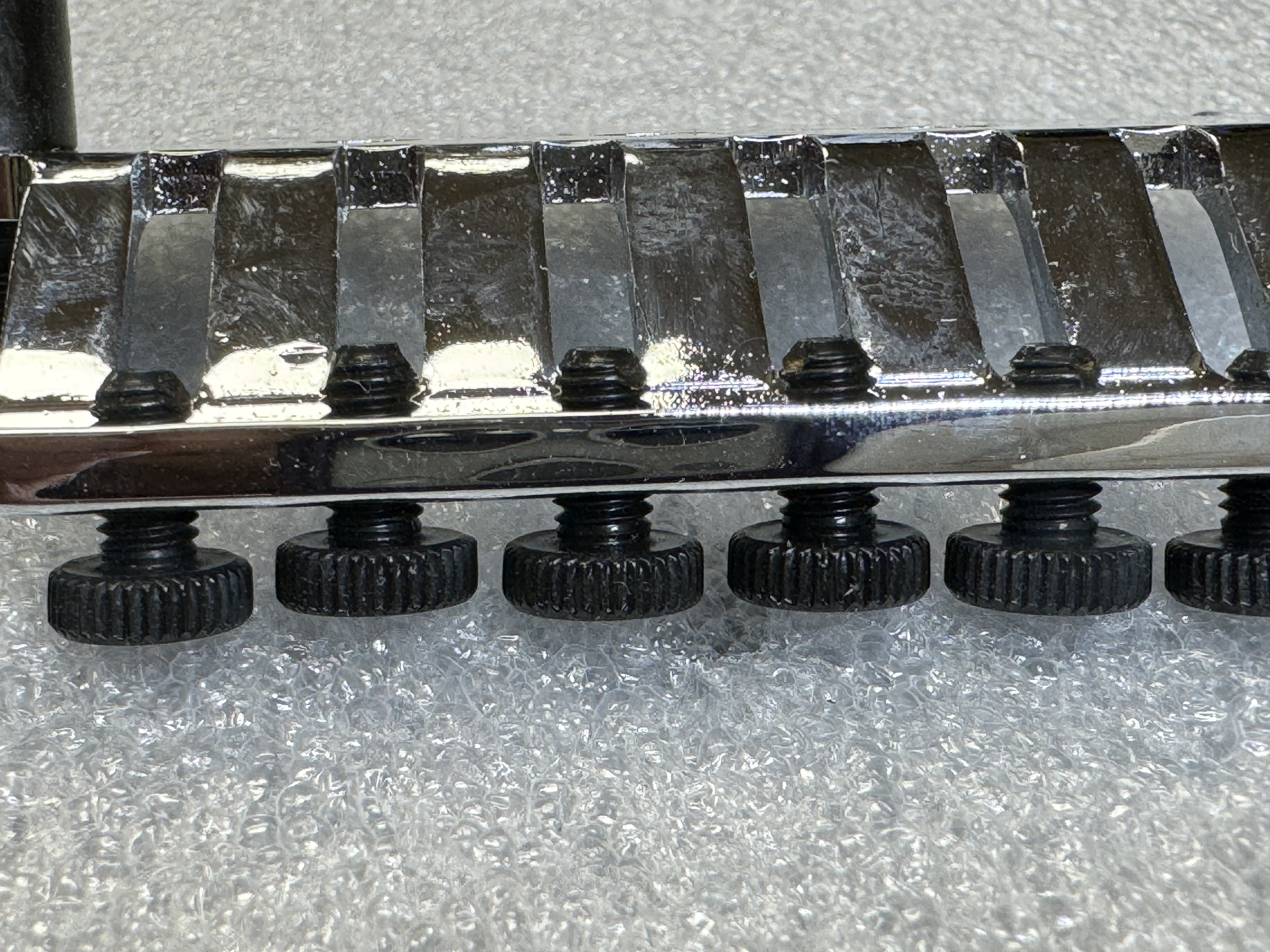
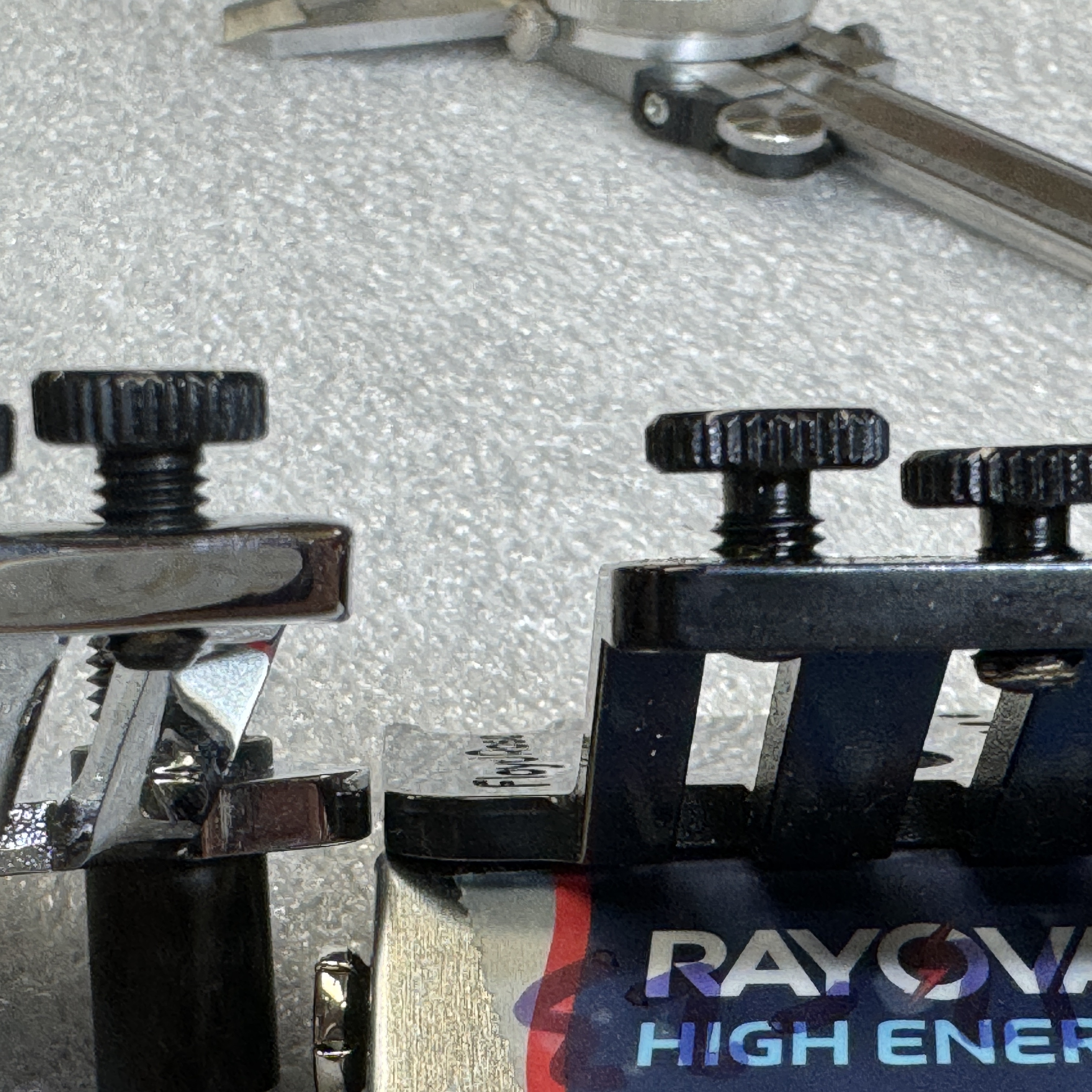



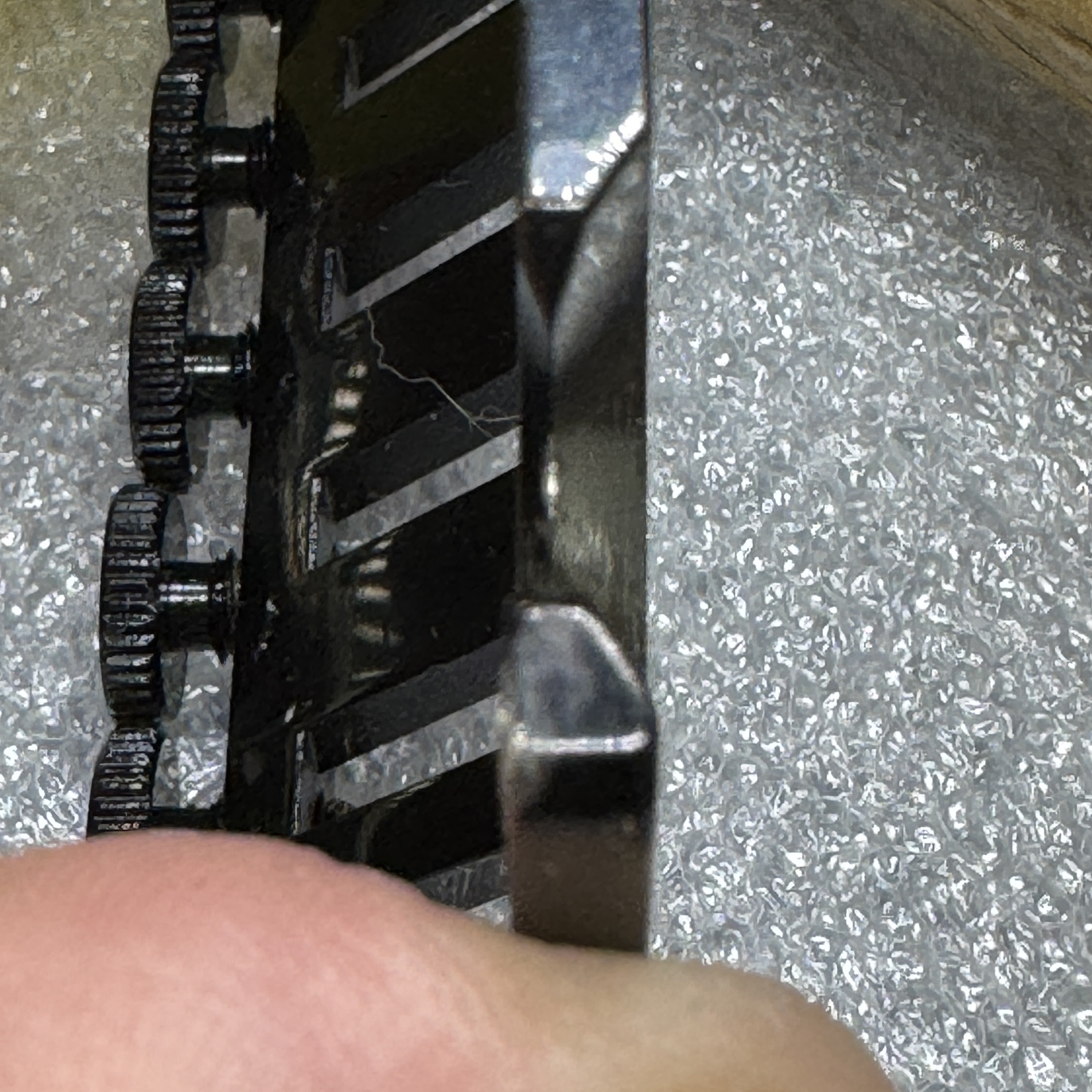
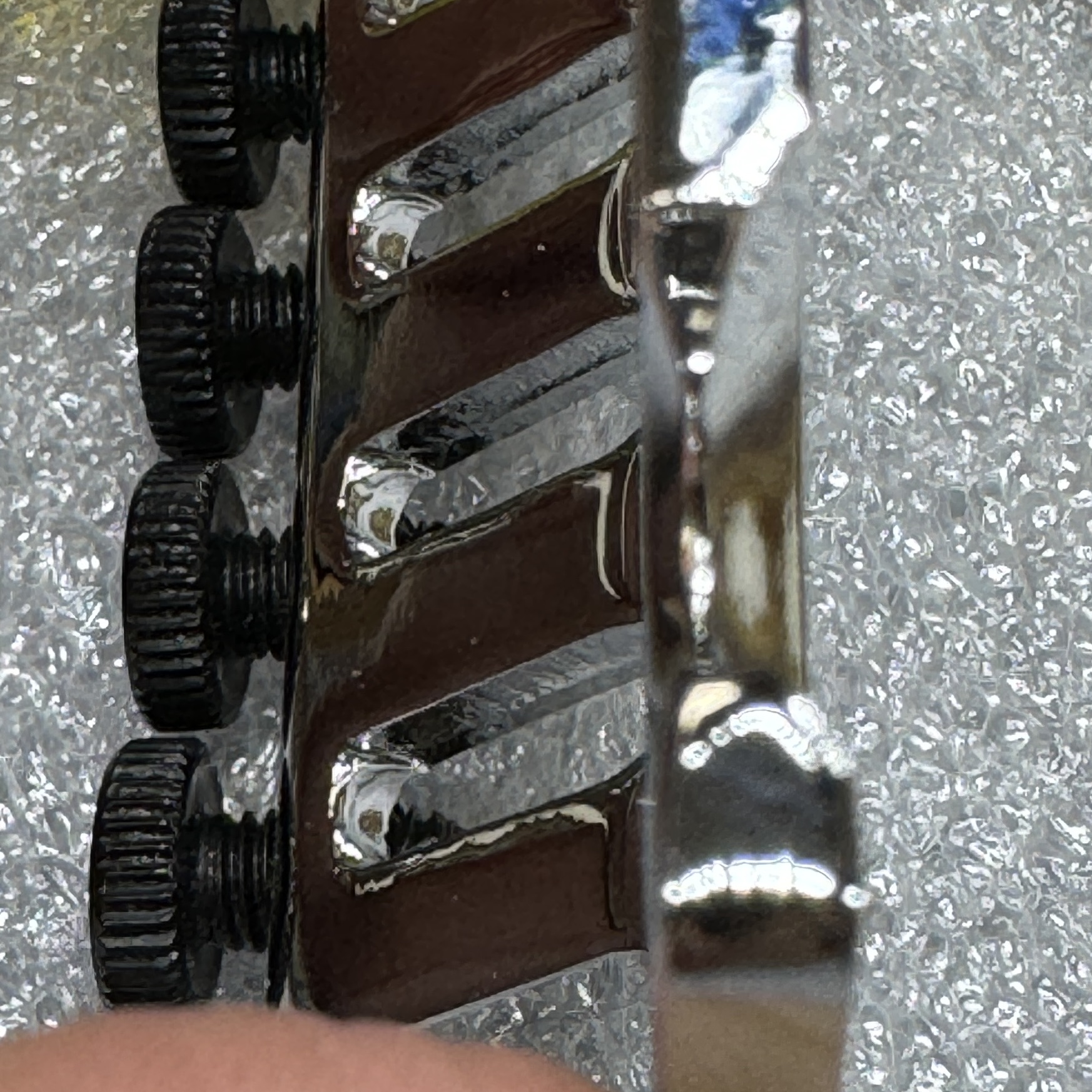
And lastly, a video. The purpose of this is to listen to the sound of the fine tuners rattle. Both bridges have the fine tuners adjusted to around half their range.

